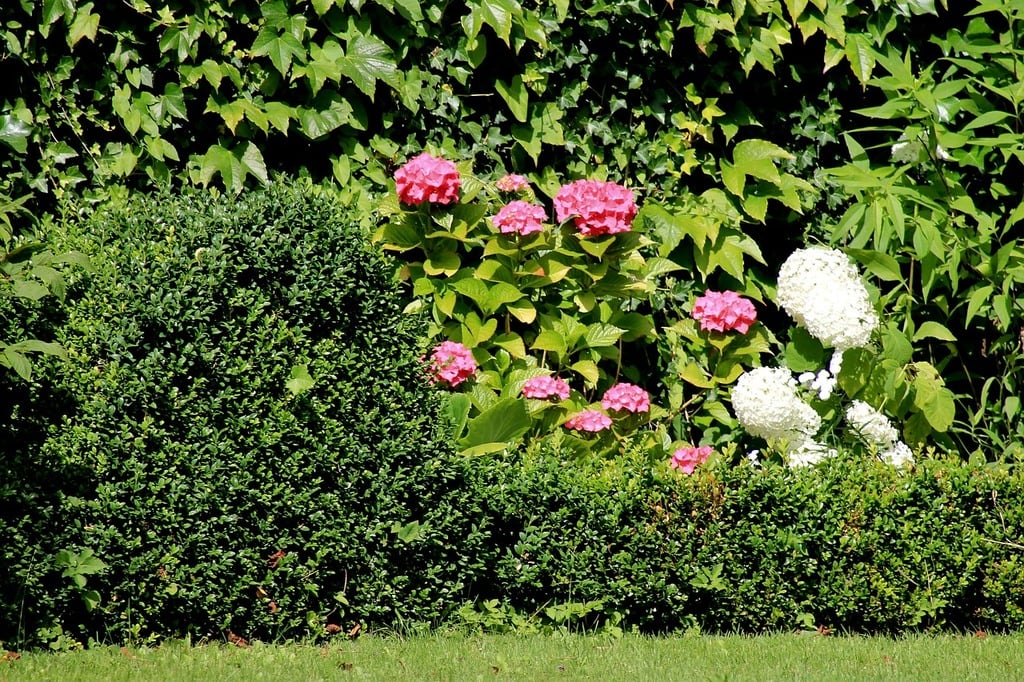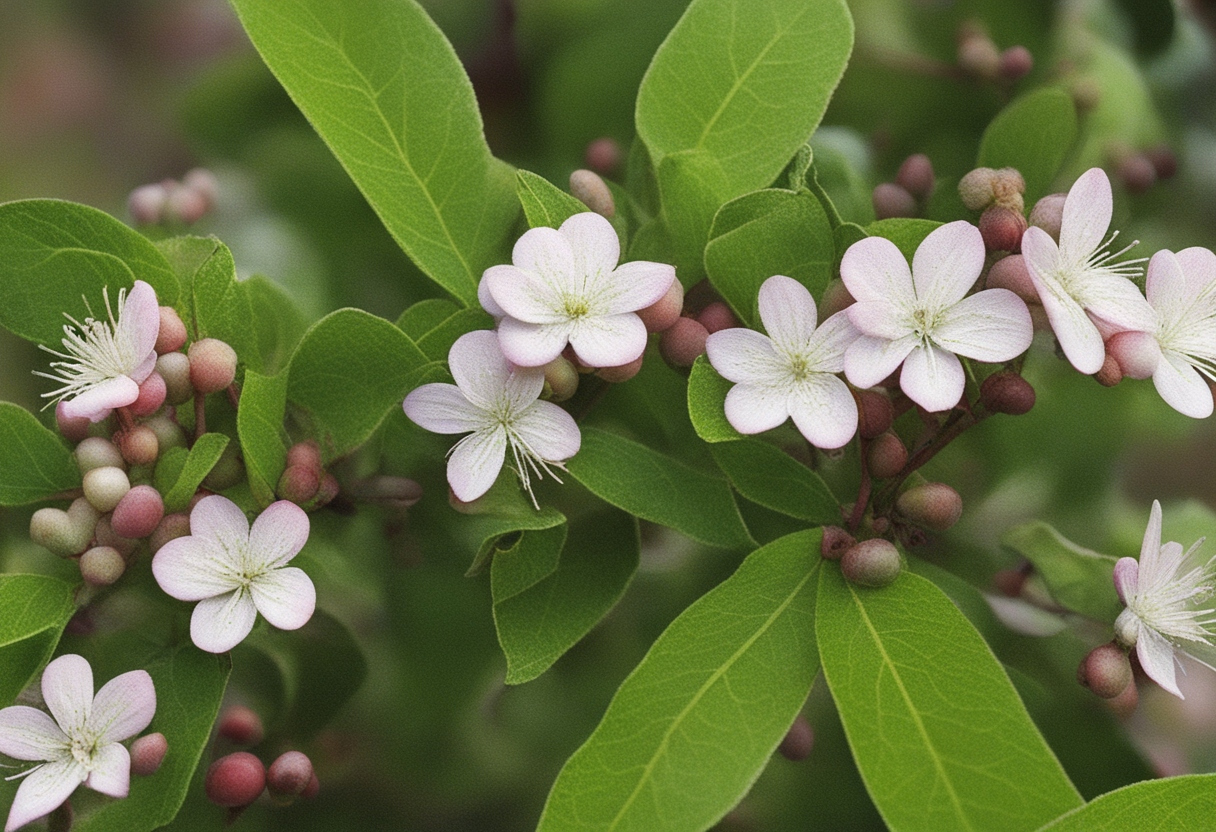Understanding the Watering Needs of Your Shrubs
Shrubs are an integral part of any landscape, adding beauty and structure to outdoor spaces. To ensure their overall health and vitality, it is crucial to understand their watering needs. Proper watering plays a significant role in the growth and development of shrubs, making it essential to provide them with adequate moisture. Without the right amount of water, shrubs may suffer and become vulnerable to diseases and pests.
Each shrub has unique watering requirements, depending on factors such as its species, age, and location. Understanding these needs is key to maintaining their health. Some shrubs prefer moist soil, while others can tolerate drier conditions. To determine the appropriate watering schedule, consider factors like the climate, soil type, and natural rainfall in your area. By tailoring your watering approach to meet the specific needs of your shrubs, you can help them thrive and flourish in your garden or landscape.
• Shrubs are an integral part of any landscape, adding beauty and structure to outdoor spaces.
• Proper watering plays a significant role in the growth and development of shrubs.
• Without the right amount of water, shrubs may suffer and become vulnerable to diseases and pests.
• Each shrub has unique watering requirements, depending on factors such as its species, age, and location.
• Some shrubs prefer moist soil, while others can tolerate drier conditions.
• To determine the appropriate watering schedule for your shrubs:
– Consider factors like the climate in your area
– Take into account the type of soil in your garden or landscape
– Evaluate natural rainfall patterns in your region
– Tailor your watering approach to meet the specific needs of each shrub
Determining the Ideal Watering Schedule for Your Shrubs
Determining the ideal watering schedule for your shrubs can be a bit of a challenge, as it largely depends on various factors such as the type of shrubs, soil conditions, weather patterns, and overall plant health. However, there are a few general guidelines that can help you establish a watering routine that will keep your shrubs healthy and thriving.
Firstly, it’s essential to consider the specific requirements of the shrubs you have planted. Some shrubs, like hydrangeas and azaleas, prefer consistently moist soil, while others, such as lavender and rosemary, thrive in drier conditions. Researching the specific needs of each shrub in your garden will give you a good starting point for determining their ideal watering schedule. Additionally, it’s crucial to take into account the environmental conditions your shrubs are exposed to. Hot, dry climates may require more frequent watering, while cooler, humid environments may necessitate less water. Regularly monitoring the moisture levels of your soil and adjusting your watering schedule accordingly will help ensure your shrubs receive the right amount of water, promoting optimal growth and health.
• Consider the specific requirements of each shrub in your garden
– Some shrubs prefer consistently moist soil, while others thrive in drier conditions
– Researching the specific needs of each shrub will help determine their ideal watering schedule
• Take into account the environmental conditions
– Hot, dry climates may require more frequent watering
– Cooler, humid environments may necessitate less water
• Regularly monitor moisture levels of the soil
– Adjust watering schedule accordingly to ensure proper hydration for your shrubs
• Promote optimal growth and health by providing the right amount of water
– Overwatering can lead to root rot and other issues
– Underwatering can cause stress and stunted growth
By following these general guidelines and staying attuned to your individual shrubs’ needs, you can establish an effective watering routine that will keep them healthy and thriving. Remember that it’s better to underwater than overwater, as most shrubs are more tolerant of drought conditions than excessive moisture. Additionally, consider using mulch around your shrubs to help retain moisture in the soil and reduce evaporation. With a little attention and care, you’ll be able to determine the ideal watering schedule for your shrubs and enjoy beautiful, vibrant plants all season long.
Signs of Underwatering Your Shrubs and How to Fix It
Signs of Underwatering Your Shrubs can be easily identified if you are attentive to the condition of your plants. One of the most common indicators is wilted or drooping foliage. When shrubs do not receive enough water, their leaves become limp and lifeless. Additionally, the color of the leaves may fade or turn yellowish, another sign of dehydration. Another clue is the dryness of the soil around the base of the shrub. By checking the moisture levels in the soil, you can determine whether your plants are lacking water.
To fix the issue of underwatering, start by adjusting your watering schedule. Shrubs generally require deep watering as opposed to frequent shallow watering. Creating a slow and steady watering regimen will allow the roots to absorb water more effectively and encourage healthy growth. Consider implementing a drip irrigation system or using a soaker hose to provide a consistent water supply. It is also important to ensure that water reaches the entire root zone of the plant. Applying mulch around the base of the shrub can help retain moisture and protect the roots from drying out.
• Wilted or drooping foliage
• Faded or yellowish leaves
• Dry soil around the base of the shrub
To fix underwatering:
• Adjust watering schedule for deep watering
• Use a drip irrigation system or soaker hose for consistent water supply
• Ensure water reaches entire root zone of the plant
• Apply mulch to retain moisture and protect roots from drying out
Signs of Overwatering Your Shrubs and How to Fix It
Signs of overwatering your shrubs can be quite evident if you know what to look for. One common sign is the presence of yellowing or wilting leaves that feel soft to the touch. Overwatered shrubs often exhibit a lack of oxygen to the roots, resulting in reduced vigor and stunted growth. Another indicator is the presence of fungi or algae growth on the surface of the soil, as excess moisture creates a favorable environment for these organisms to thrive. Additionally, an overly saturated soil may emit a foul odor due to the decomposition of organic matter.
If you suspect that your shrubs are being overwatered, there are a few steps you can take to address the issue. Firstly, reduce the frequency and duration of watering sessions. Allow the soil to partially dry between waterings to promote a healthier root system and discourage the growth of fungi. Consider improving drainage by amending the soil with organic matter or installing a drainage system, especially if your shrubs are planted in heavy clay or compacted soil. Additionally, ensure that you are not watering your shrubs during rainy periods, as this can contribute to overwatering. By taking these measures, you can help your shrubs recover and flourish once again.
• Yellowing or wilting leaves that feel soft to the touch
• Reduced vigor and stunted growth
• Fungi or algae growth on the soil surface
• Foul odor from decomposing organic matter
To address overwatering, follow these steps:
• Reduce frequency and duration of watering sessions
• Allow soil to partially dry between waterings
• Improve drainage by adding organic matter or installing a drainage system
in heavy clay or compacted soil
• Avoid watering during rainy periods
By implementing these measures, you can help your shrubs recover and thrive.
Factors to Consider When Watering Your Shrubs
Watering your shrubs is a crucial task to ensure their health and vitality. However, before you grab your watering can, there are a few factors you need to consider. Firstly, understanding the specific watering needs of your shrubs is essential. Different types of shrubs have different water requirements, depending on factors such as their size, age, and species. While some shrubs thrive in moist soil, others prefer dryer conditions. Therefore, it is crucial to research and identify the watering needs of each individual shrub in your garden.
Secondly, the climate and weather conditions in your area play a significant role in determining the frequency and amount of water your shrubs require. Hot and dry climates may require more frequent watering, while cooler and humid conditions may necessitate less watering. It is essential to keep an eye on weather patterns and adjust your watering schedule accordingly. Additionally, pay attention to the amount of rainfall your garden receives as this can affect your watering routine. By considering these factors, you can ensure your shrubs receive the right amount of water to thrive and maintain their health.
• Understand the specific watering needs of your shrubs
• Different types of shrubs have different water requirements
• Factors such as size, age, and species can affect watering needs
• Research and identify the watering needs of each individual shrub
• Consider the climate and weather conditions in your area
• Hot and dry climates may require more frequent watering
• Cooler and humid conditions may necessitate less watering
• Keep an eye on weather patterns to adjust your watering schedule
• Pay attention to the amount of rainfall your garden receives
• Rainfall can affect your regular watering routine
• Adjust your watering schedule based on rainfall levels
By considering these factors, you can ensure that you are providing the right amount of water for your shrubs. This will help them thrive and maintain their health over time. Remember that proper hydration is essential for their overall vitality, so take the time to assess their specific needs regularly. Happy gardening!
The Importance of Proper Drainage for Healthy Shrubs
Proper drainage is a critical factor for maintaining healthy shrubs. When it comes to watering your plants, ensuring that excess water can escape is just as important as providing enough water for their needs. Without adequate drainage, roots can become waterlogged, leading to root rot and other issues.
To promote proper drainage, it is essential to choose the right type of soil and amend it accordingly. Sandy or loamy soil is generally preferable, as it allows water to pass through easily. On the other hand, heavy clay soil can become compacted, trapping water and preventing it from draining away. Adding organic matter, such as compost, can improve soil structure and drainage, making it more suitable for healthy shrub growth. Additionally, ensuring that the planting area has the proper slope can help water flow away from the shrubs, preventing waterlogging.
• Proper drainage is crucial for maintaining healthy shrubs
• Excess water should be able to escape to prevent root rot and other issues
• Choosing the right type of soil, such as sandy or loamy soil, promotes proper drainage
• Heavy clay soil can become compacted and trap water, hindering drainage
• Adding organic matter like compost improves soil structure and drainage
• Ensuring that the planting area has the proper slope helps water flow away from shrubs
Best Practices for Watering Newly Planted Shrubs
Watering newly planted shrubs properly is crucial for their healthy establishment and growth. The initial period after planting is when shrubs are most vulnerable and require special care. To ensure their survival, it is essential to follow some best practices when it comes to watering.
First, it is important to provide enough water to thoroughly moisten the root ball and the surrounding soil. This usually requires watering the shrub deeply and slowly, allowing the water to penetrate down to the roots. Using a soaker hose or drip irrigation system can help ensure a slow and thorough watering. It is generally recommended to water the shrub two to three times a week, depending on the weather conditions and the type of shrub. However, it is crucial to avoid overwatering, as excess moisture can lead to root rot and other diseases. It is advisable to check the soil’s moisture level before watering again and adjust the frequency accordingly.
• Water the shrub deeply and slowly to thoroughly moisten the root ball and surrounding soil
• Use a soaker hose or drip irrigation system for a slow and thorough watering
• Water two to three times a week, adjusting frequency based on weather conditions and shrub type
• Avoid overwatering to prevent root rot and other diseases
• Check soil moisture before watering again
Watering Techniques for Different Types of Shrubs
When it comes to watering different types of shrubs, understanding their unique needs is crucial for their overall health and well-being. One important factor to consider is the type of soil in which the shrubs are planted. Some shrubs, such as those with shallow roots or those that prefer well-draining soil, require more frequent watering. On the other hand, shrubs with deep roots or those that tolerate drought conditions may require less frequent watering. It is essential to research the specific watering requirements of each shrub variety to ensure they receive the appropriate amount of moisture.
Another factor to consider is the age of the shrubs. Newly planted shrubs require more frequent watering to establish their roots. As they mature, the watering frequency can be gradually reduced. However, it is crucial not to overwater mature shrubs, as this can lead to root rot and other water-related issues. By paying attention to the watering needs of different types of shrubs, gardeners can create an environment that promotes healthy growth and thriving plants.
• Understanding the unique watering needs of different types of shrubs is crucial for their overall health and well-being.
• The type of soil in which the shrubs are planted plays a significant role in determining their watering requirements.
• Shrubs with shallow roots or those that prefer well-draining soil may require more frequent watering.
• Shrubs with deep roots or those that tolerate drought conditions may require less frequent watering.
• Researching the specific watering requirements of each shrub variety is essential to ensure they receive the appropriate amount of moisture.
• Another factor to consider when watering shrubs is their age.
• Newly planted shrubs require more frequent watering to establish their roots.
• As they mature, the frequency can be gradually reduced, but it is important not to overwater mature shrubs as it can lead to root rot and other water-related issues.
• Gardeners should pay attention to the individual needs of different types of shrubs to create an environment that promotes healthy growth and thriving plants.
Dealing with Drought: Watering Strategies to Keep Your Shrubs Thriving
During periods of drought, it is crucial to implement effective watering strategies to ensure the well-being and survival of your shrubs. One strategy is to focus on deep watering rather than frequent, shallow watering. Deep watering encourages the roots of shrubs to grow deeper into the ground in search of moisture, making them more resilient to drought conditions. To achieve deep watering, consider using drip irrigation or soaker hoses that slowly release water at the base of the shrubs. This method allows the water to penetrate the soil deeply, reaching the root zone where it is needed most.
Another effective strategy is to mulch around your shrubs. Mulch acts as a protective layer, helping to retain soil moisture and regulate temperature. Apply a layer of mulch around the base of your shrubs, ensuring that it extends a few inches out from the trunk. This will not only help to conserve moisture but also suppress weed growth, reducing competition for water. Furthermore, mulch can prevent soil erosion, which is particularly important during dry spells when the risk of losing valuable topsoil is heightened.
• Deep watering encourages root growth and makes shrubs more drought-resistant
• Use drip irrigation or soaker hoses to achieve deep watering
• Mulch around shrubs helps retain soil moisture and regulate temperature
• Apply a layer of mulch extending a few inches out from the trunk
• Mulch suppresses weed growth, reducing competition for water
• Mulch prevents soil erosion during dry spells
Seasonal Watering Adjustments for Shrubs: What You Need to Know
When it comes to watering your shrubs, adjusting your watering routine based on the seasons is crucial for their overall health and vitality. Understanding the specific watering needs of your shrubs during different times of the year can help ensure they receive the right amount of moisture to thrive.
During the spring and summer months when temperatures rise and rainfall may be less frequent, it is important to increase the frequency and duration of your watering sessions. This is because shrubs tend to have increased water requirements during their active growth period. Regular watering during these months will help prevent dehydration and promote healthy growth. However, it is important to avoid overwatering as excessive moisture can lead to root rot and other fungal diseases.
• Increase the frequency and duration of watering sessions during spring and summer months
• Shrubs have increased water requirements during their active growth period
• Regular watering prevents dehydration and promotes healthy growth
• Be cautious of overwatering to avoid root rot and fungal diseases












